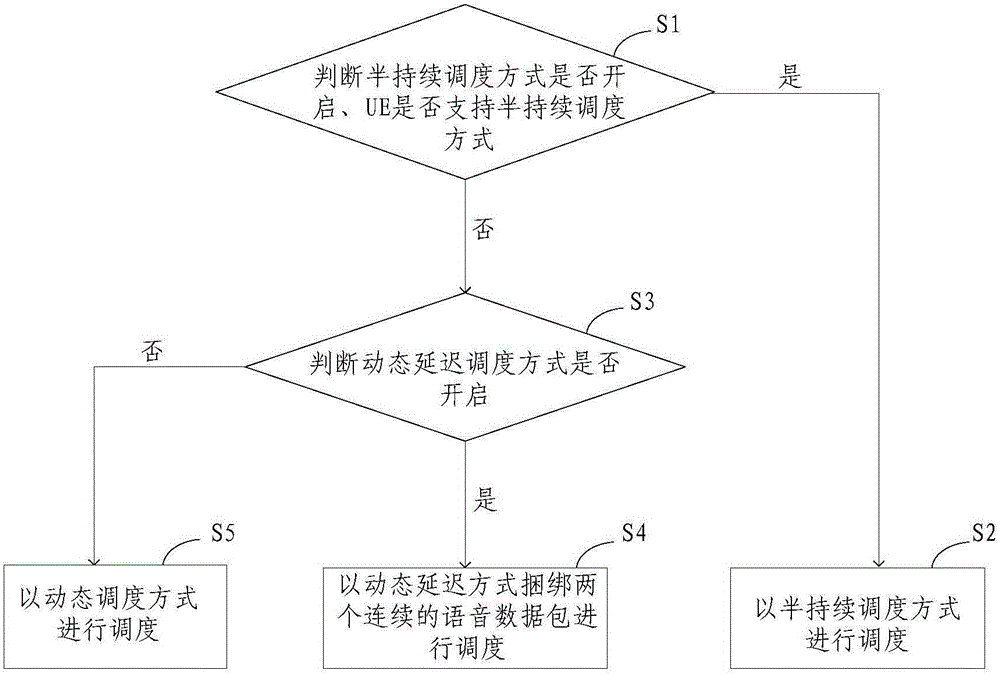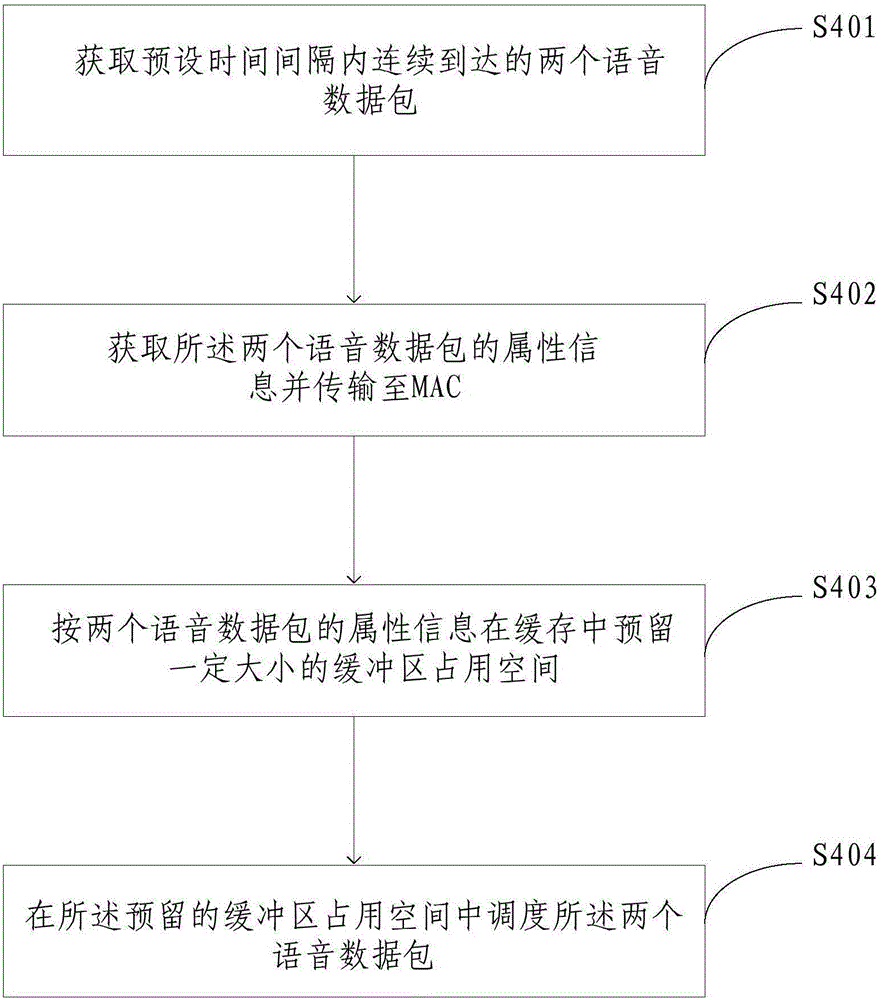Voice data dynamic delay scheduling method and base station
A technology for dynamic delay scheduling and voice data, applied in the field of communication, can solve problems such as poor flexibility, high PDCCH resource overhead, and inability to play at the same time, achieve high modulation and coding levels, increase user capacity, and improve flexibility.
- Summary
- Abstract
- Description
- Claims
- Application Information
AI Technical Summary
Problems solved by technology
Method used
Image
Examples
Embodiment 1
[0045] As shown in Fig. 2 (a), the present invention relates to a kind of voice data dynamic delay scheduling method, comprising:
[0046] S1: Determine whether the semi-persistent scheduling mode is enabled and whether the UE supports the semi-persistent scheduling mode; if so, execute step S2 in sequence; otherwise, skip to step S3;
[0047] S2: Scheduling by semi-persistent scheduling;
[0048] S3: Determine whether the dynamic delay scheduling mode is enabled, if so, execute step S4 sequentially; otherwise, skip to step S5;
[0049] S4: Bundle two continuous voice data packets in a dynamic delay mode for scheduling;
[0050] S5: Scheduling in a dynamic scheduling manner.
[0051]In this embodiment, only when the semi-persistent scheduling mode is enabled and the UE supports the semi-persistent scheduling mode at the same time, the semi-persistent scheduling mode is used for scheduling; otherwise, the dynamic delay scheduling mode is adopted; if the dynamic delay scheduli...
Embodiment 2
[0068] The present invention also provides a base station, such as image 3 shown, including:
[0069] A judging module, judging whether the semi-persistent scheduling mode is enabled, and whether the UE supports the semi-persistent scheduling mode;
[0070] The semi-persistent scheduling module is used for scheduling in the semi-persistent scheduling mode when the semi-persistent scheduling mode is enabled and the UE supports the semi-persistent scheduling mode;
[0071] The dynamic delay scheduling module is used to determine whether the dynamic delay scheduling mode is enabled when the semi-persistent scheduling mode is not enabled, and if so, then bundle two continuous voice data packets in the dynamic delay scheduling mode for scheduling; otherwise, perform scheduling in the dynamic scheduling mode .
[0072] In this embodiment, only when the semi-persistent scheduling mode is enabled and the UE supports the semi-persistent scheduling mode at the same time, the semi-per...
PUM
 Login to View More
Login to View More Abstract
Description
Claims
Application Information
 Login to View More
Login to View More - R&D
- Intellectual Property
- Life Sciences
- Materials
- Tech Scout
- Unparalleled Data Quality
- Higher Quality Content
- 60% Fewer Hallucinations
Browse by: Latest US Patents, China's latest patents, Technical Efficacy Thesaurus, Application Domain, Technology Topic, Popular Technical Reports.
© 2025 PatSnap. All rights reserved.Legal|Privacy policy|Modern Slavery Act Transparency Statement|Sitemap|About US| Contact US: help@patsnap.com



